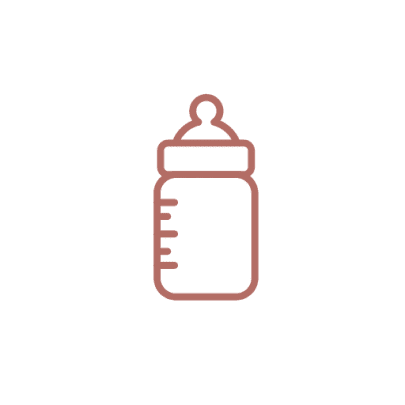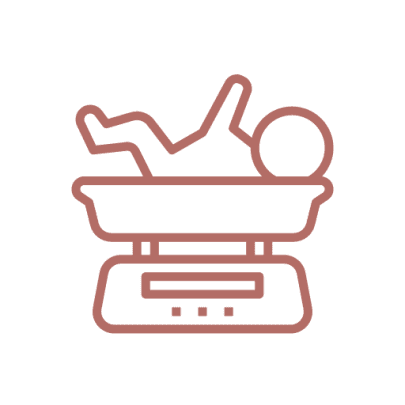How to Latch your Baby
1. Position Yourself Properly.
Sit up in bed or in a comfortable armchair. You should be relaxed with no muscles straining.
2. Position Your Baby Properly.
Your baby should be lying on his side with his whole body facing you and his head resting on your forearm or in the crook of your elbow. His back should be supported by your forearm and you can hold his bottom or upper thigh with your hand. His ear, shoulder, and hips should be in a straight line.
3. Offer Your Breast to Baby.
Cup your breast with your free hand, supporting it with your fingers underneath and your thumb on top. When the baby opens his mouth very wide, centre your nipple in his mouth and quickly pull baby toward you. Its important to pull him in very close to you, rather than you moving toward him.
4. Effective Sucking Techniques.
To suck effectively, your baby must get a large portion of the breast tissue into his mouth along with your nipple. His gums should completely bypass the nipple to take in the breast tissue. The bottom lip should be turned out, the upper lip should not be sucked in. Poor positioning can cause nipple damage or pain, so its worth getting it right from the start.
Checking the Latch
Once baby is latched on, check his latch. If it’s not a good one, you should take him off thebreast and try again. Do not allow a poor latch, as this can lead to sore nipples for you, improper suckling habits for baby, and baby not getting as much milk as possible during a feeding.
If you need to remove baby from the breast, first release the suction. Slip a finger into the corner of baby’s mouth, between his gums. Hold your finger there to protect your nipple while removing it from baby’s mouth. Try latching on again. (As baby gets older and more experienced, this will get easier!)
Look at the areola:
- Baby should have part of the areola in his mouth, not just the nipple!
- Baby may be perfectly centered on the areola. This is called “bulls-eye” latch.
- Baby may take in more of the breast by his lower lip, and you may see part of the areola above his top lip. This is called an “asymmetric” latch.
Look at the baby:
- Lips are flanged out, “fish lips.” The tongue is over lower gum, under the nipple. Make sure lower lip is not tucked under, though this may be hard for mom to get a good view of when baby is latched on well.
- Baby’s chin indents breast tissue a little.
- Baby’s nose is touching breast. Baby can breathe easily with nostrils flared out specifically for this purpose. If he has any trouble breathing and pulls away from the breast, try lifting your breast a little, or pulling his legs closer to you. Don’t press on your breast to move it away from baby’s nose because this may pull your nipple out of the back of baby’s mouth, which could cause nipple soreness.
- Baby’s cheeks look full, not sucked in as if sucking on a straw.
You can see swallowing motions in his temple, lower jaw, or ear. He begins feedings with rapid sucks, then, once milk lets down, there is a slower pattern of bursts of sucking and short pauses. In the early days, he may suck 5 times without swallowing. After day 5, it’s typically suck, swallow, suck, swallow.








